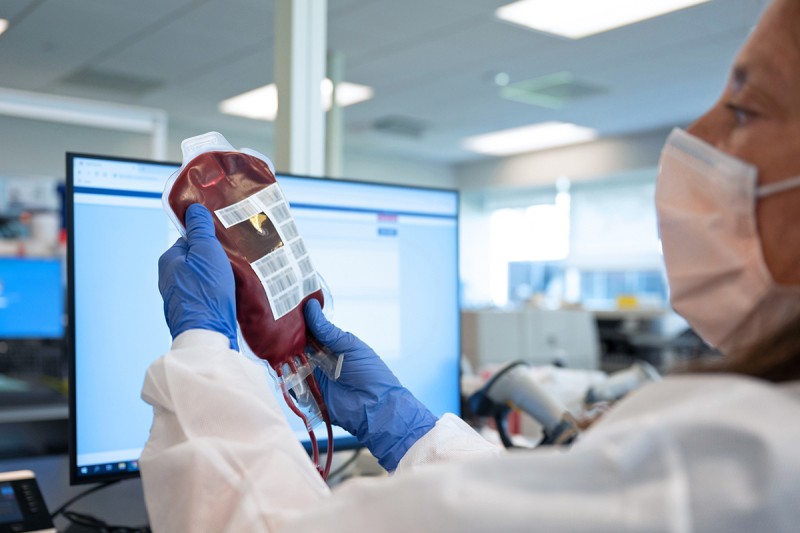
Cord blood transplants use stem cells collected from the umbilical cord blood of a healthy newborn.
Allogeneic stem cell or bone marrow transplants can be lifesavers for people with a blood cancer such as leukemia or lymphoma. After chemotherapy is used to destroy the cancer, blood-forming stem cells from a donor are infused to repair and restore the bone marrow.
Unfortunately, only about one-quarter of the people who need an allogeneic transplant have a sibling who is a genetic match and able to donate stem cells. The other three-quarters need to find another donor for their transplant.
People can receive bone marrow or stem cells donated by an adult who is not related to them. But many who need a transplant are not able to find a matched donor from any of the volunteer donor registries. These people can benefit from a different procedure called a cord blood transplant, which uses stem cells from the umbilical cord blood of a healthy newborn. Stem cell donations from adult volunteers and cord blood collections are found through Be the Match or another donor registry.
Here are answers to some frequently asked questions about cord blood and cord blood transplants.
What is cord blood, and why is it a good option for some people who need a stem cell transplant?
Cord blood is collected from the umbilical cord and placenta of healthy newborns and is a rich source of blood-forming stem cells. Parents have the option of donating it at birth. The cells are stored frozen in public cord blood banks.
A major advantage of cord blood is that the immune system of a newborn baby is not yet fully developed. This means that the match that’s required between the cord blood stem cells and the person receiving them is less strict.
However, even though the cord blood immune system is very malleable, it can still develop into a healthy immune system. Also, cord blood cells are very good at fighting cancer. This ability is called the graft-versus-leukemia effect. It can help prevent a person’s cancer from returning after their transplant.
What does it mean for donor cells to be matched, and why is it often hard for people to find a match?
The test that’s used to identify appropriate donors is called HLA matching. HLA stands for human leukocyte antigen. HLAs are proteins that are present on most cells in your body. Your immune system uses HLAs to recognize which cells belong in your body. When using an adult donor, it’s important that the donor and the person undergoing the transplant have HLAs that match so the donor immune system doesn’t attack the patient’s normal tissues, a complication called graft-versus-host disease.
A person’s HLA type is inherited from their parents, which is why siblings offer the best chance of finding a match. People’s HLA type can be determined with a simple blood test or cheek swab.
People of southern European, Asian, African, Hispanic, and Middle Eastern backgrounds tend to have more diverse HLA types. These types are less commonly found in adult volunteer donor registries. It can also be difficult for someone with a mixed background — for example, part Asian and part Hispanic — to find a donor who is a match. For them, cord blood transplants offer a good opportunity for a cure.
What kind of expertise does MSK have in performing cord blood transplants?
MSK has one of the most active and successful cord blood transplant programs in the world. We have performed more than 350 cord blood transplants in adults and children — more than half of them being of non-European ancestry.
However, these transplants are complex. They offer great benefits, provided the hospital where the transplant is done has the expertise to manage the potential complications. MSK has experts who can tackle transplant complications as a matter of routine.
What do we know about outcomes for people who undergo this type of transplant?
Recently, MSK analyzed the outcomes of double-unit cord blood transplants in adults with cancers of the blood and bone marrow. The investigation showed that our results are some of the best in the world. They are as good as transplants with cells from adult donors.


